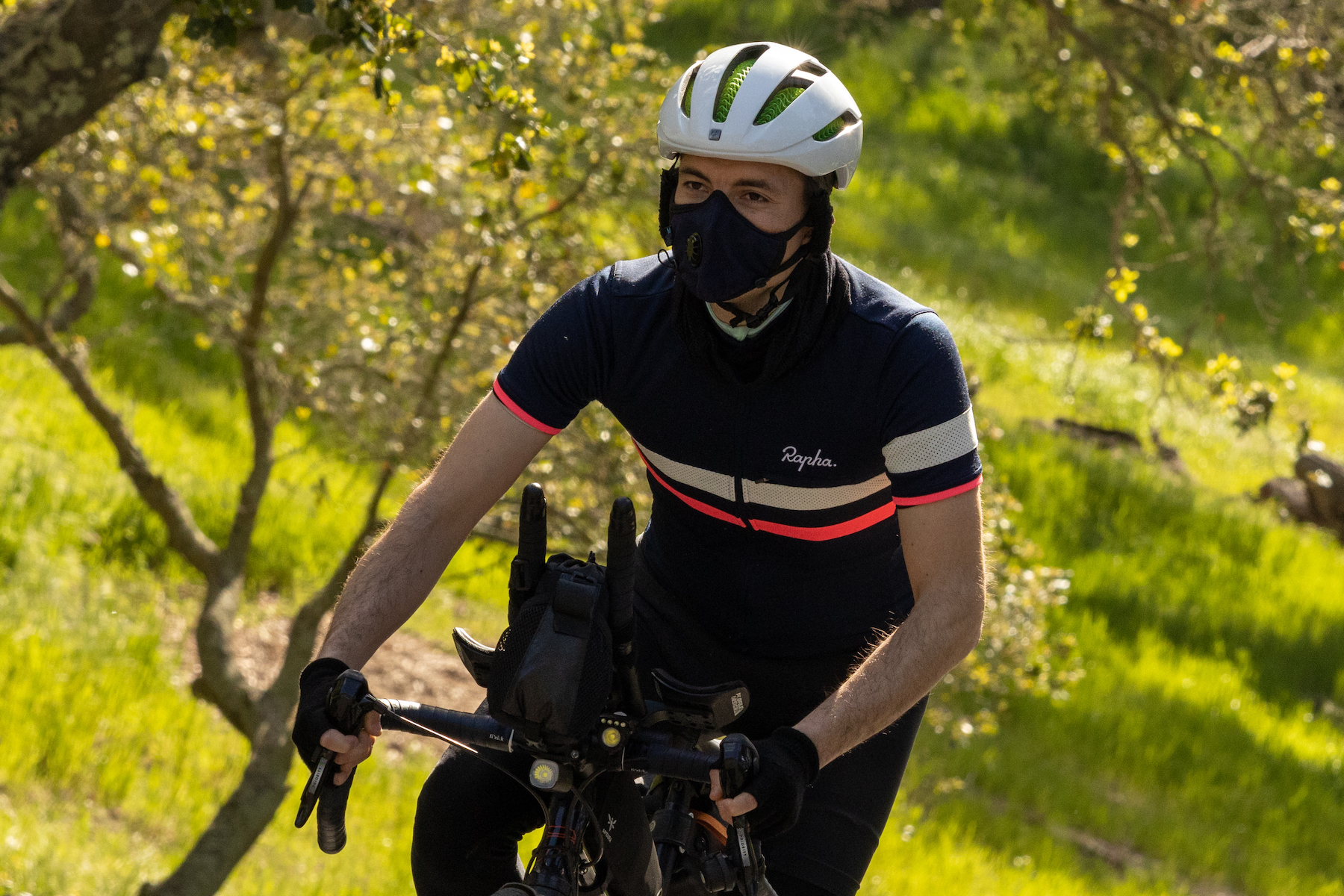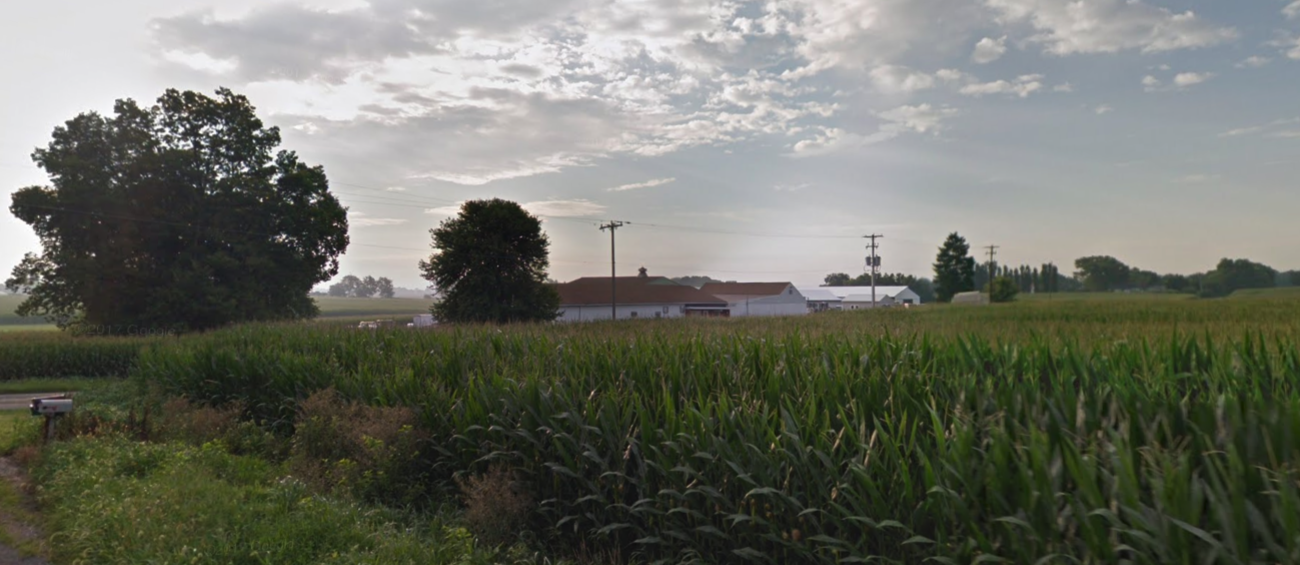On April 2, 2023, I realized that bicycles are machines to visit alternate futures.
Originally published on Global Voices

J. Nathan Matias cycling in the foothills of the Santa Cruz Mountains in his respiratory mask. Photo by Cameron Campbell.
This article is part of a series by J. Nathan Matias for a 500+ mile bicycle ride in June 2023 that is raising funds for Rising Voices, Global Voices’ endangered/Indigenous language program, and the Central California Environmental Justice Network. Donate to the initiative here.
April 2, 2023, was the day I realized that bicycles are machines to visit alternative futures.
As I descended from hours of tangled roads through redwood forest mists, I should have expected something unusual. After weeks of torrential downpours, the mountain passes had become an uncertain maze of detours. My companion Noah and I wove carefully around the fallen boulders and landslides that had taken bites from the steep sides of curving paths.
Now a vast plain stretched out under the hot sun, traversed by hunched walkers in white jumpsuits. “This looks like a disaster zone,” Noah said. My lungs started to burn and the figures on my biocomputer declined to dangerous levels. And just as I reached for the mask in my equipment bag, I saw a figure of myself.
Which face do you pick to meet chaos? As a university professor who travels hundreds of miles by bicycle to learn and tell stories, I sometimes think about Binyavanga Wainaina's question about when choosing which cliche to wear. Am I simply another Ivy League explorer in search of data and lecture material? Or am I, a Guatemalan-American with Mam indigenous heritage, like Semley—the tragic heroine imagined by Ursula K. Le Guin who reclaims her people’s dignity and heritage from the heart of empire? Or do I step out in complicated glory like Las Casas, the conquistador-priest and social entrepreneur who said no to unjust systems of power?
I carry each of these stories with me. I also carry my own. And it was my own story that looked back at me from a white suit across the marsh flats of the Pajaro Valley that April afternoon.

Workers in white suits spread pesticides in the Pajaro Valley, California. Photo by J. Nathan Matias.
If you've ever eaten a strawberry in the United States, there's a good chance it came from the Pajaro Valley or a nearby farm along the Salinas River where it empties into Monterey Bay. Spring rains and winter snow flow down from the Santa Cruz and Gabilan mountains into a low-lying delta and marshlands that replenish the valley's water supply.
The day I rode through Pajaro, thousands of people were still struggling to navigate mass displacement and homelessness from torrential flooding weeks earlier. Federal assistance for these families wouldn't be announced for another ten days, nearly a month after the disaster. With berry crops destroyed, local work opportunities had decreased, and growers were just starting to plant again in the fields that had been flooded.

The California EnviroScreen Pollution Risk Map for 2021
In the Pajaro Valley, planting means pesticides. According to the California EnviroScreen project, the region has the highest possible score for pesticides, paired with high rates of asthma and cardiovascular disease, especially among children. The white suits I saw in the fields were protective gear. Near the road, a line of workers queued up at a checkpoint, astronauts outside an airlock. On the other side people re-entered the town in their own clean clothes.
I sometimes feel like an astronaut when riding my bicycle. As a cyclist with a respiratory disability, I carry an air quality sensor, a heart rate monitor, and a power meter that reports just how much energy my muscles are able to use. Passing through the Pajaro Valley, my airways contracted, I felt dizzy, my heart rate dropped, and my body became less able to produce power. My friend Noah, like most people, barely noticed a change. But I quickly placed an N-99 mask over my mouth and nose.
“I could not have survived here,” I repeated to myself, looking at my fellow Central Americans walking to the pesticide sanitation station in their white protective suits. And then I remembered my own day as a farm worker—a day that changed my life forever.

The battery farm where J. Nathan Matias worked for a single day. Photo by J. Nathan Matias.
I don't exactly remember when exactly I got the job shoveling chicken shit at a battery farm in Central Pennsylvania. My parents insist I was legally employed, and I believe it because state law permits children 14 and younger to work on farms. I remember being excited at the idea of earning an hourly wage and was eager to impress the farmer with my work ethic.
After suiting up with a respirator, gloves, and overalls, I picked up a short, flat-ended shovel and followed the farmer into the longest building I had ever seen. On all sides, rows of chicken cages stretched above my head into the distance. The air was so laden with excrement that no respirator could fully filter the stench. I didn't know it then, but battery cages had been invented less than 50 years earlier and the European Union had already banned them.
Shoveling excrement on chicken farms is a job so dangerous and unpleasant that it only gets described by safety regulators and by entrepreneurs trying to replace it with robots. And it was while scraping the poop of thousands of stressed-out, hostile chickens that I first learned I had asthma.
I don't remember if I lasted the whole day’s shift—though I do remember the now-familiar terror of opening my mouth and being unable to draw air into my lungs. I was stuck in bed for days. Thankfully, our family doctor prescribed the blue and brown inhalers that I still take on every bicycle journey. My parents firmly informed the farmer I would not be returning. My next job, stocking shelves at a hardware store, proved much safer. The job also introduced me to multiple generations of community leaders who encouraged my college dreams.

Farm work facility near Watsonville, California. Photo by J. Nathan Matias.
What might my life have become if my body had withstood the rigors and perils of farm work? If we agree to judge people by the content of their character, I think I could learn a few things from my alternate self. At minimum, I might now be more closely connected to my heritage and have a better understanding of Spanish and Indigenous languages.
Like the people of the Pajaro Valley, I hope I would still have become someone who supported my neighbors and advocated for my community—like the group that organized to convince the White House to provide disaster relief to Pajaro and repair neglected infrastructure. The education scholar Tara Yosso calls this “Community Cultural Wealth”—resources of family, culture, language, hope, and resistance that marginalized communities can especially offer to society.
A few weeks ago, the Central California environmental justice organizer Nayamin Martinez asked me: “Why ride your bicycle here when you have asthma?” Later this month, when my friend Ivan and I start a 550 mile ride along the route of the 1966 Farm Worker’s March, I’m going to need my air sensor, biomonitors, and mask. I’ll need to keep my inhalers close at hand. But according to the science, bicycle training actually makes me stronger and safer.
I’ll also get to meet leaders whose creativity and cultural wealth are transforming the future of food, climate, and civic life. And as I have learned, bicycles are machines for exploring alternative futures.
References:
- Le Guin, U.K. (1964) The Dowry of Angyar. Amazing Stories
- Yosso, T. J. (2005). Whose culture has capital? A critical race theory discussion of community cultural wealth. Race ethnicity and education, 8(1), 69-91.
- Wainaina, B. (2011). One Day I Will Write About This Place. Graywolf Press.
- Hansen, E. S. H., Pitzner-Fabricius, A., Toennesen, L. L., Rasmusen, H. K., Hostrup, M., Hellsten, Y., … & Henriksen, M. (2020). Effect of aerobic exercise training on asthma in adults: a systematic review and meta-analysis. European Respiratory Journal, 56(1).
Post a Comment